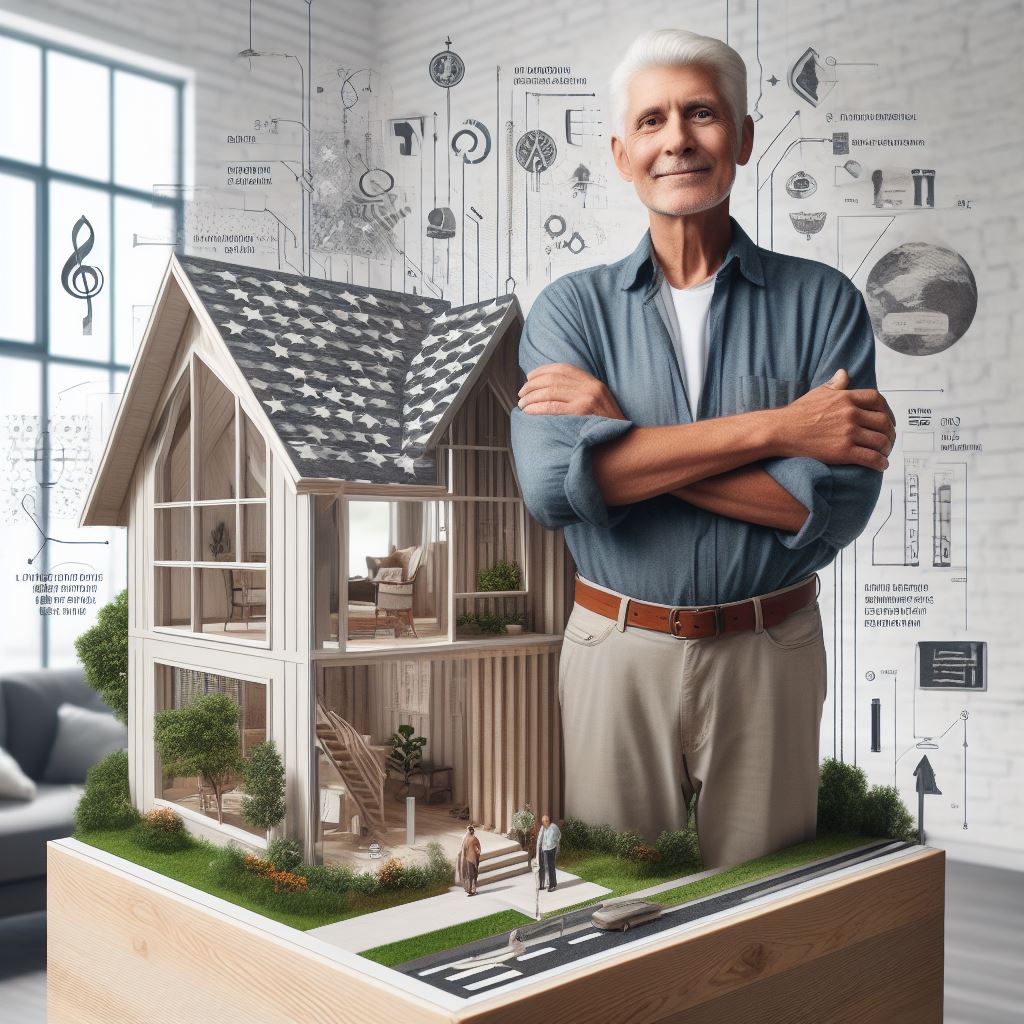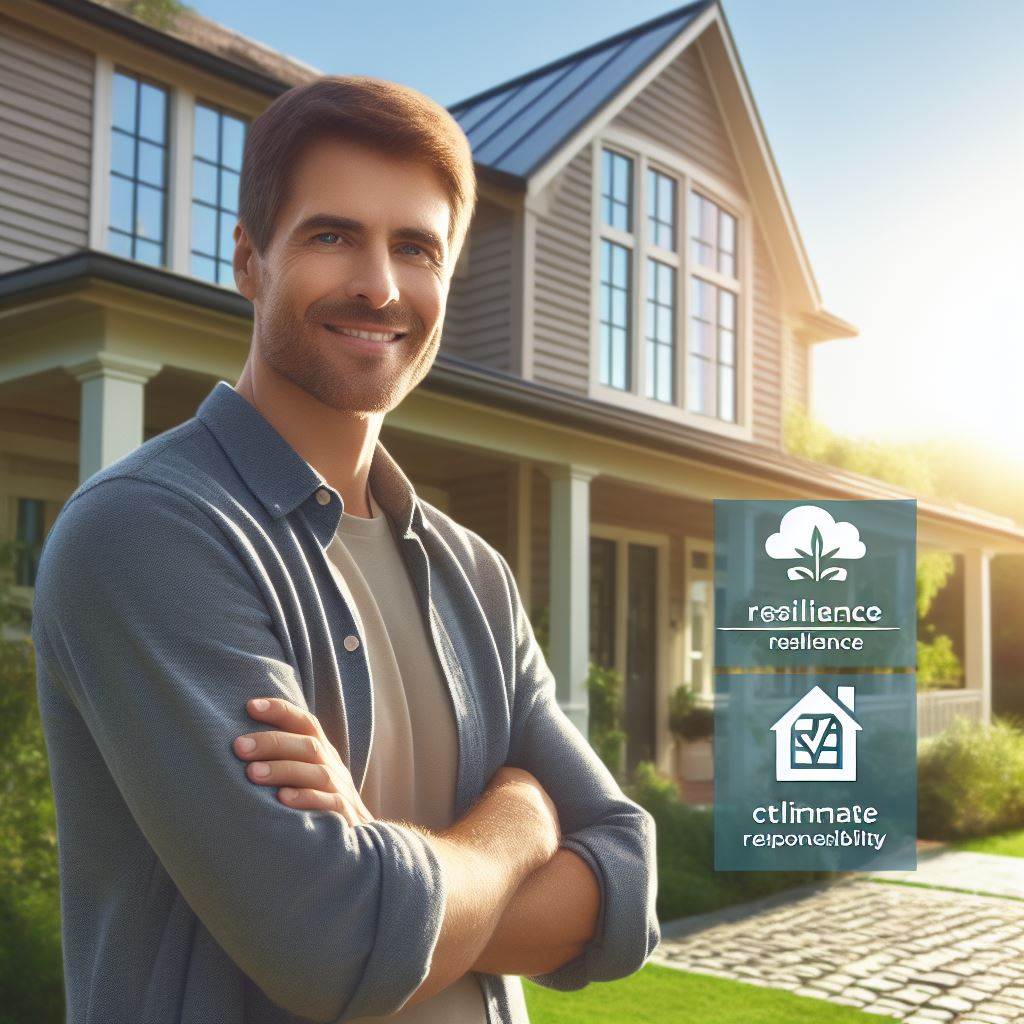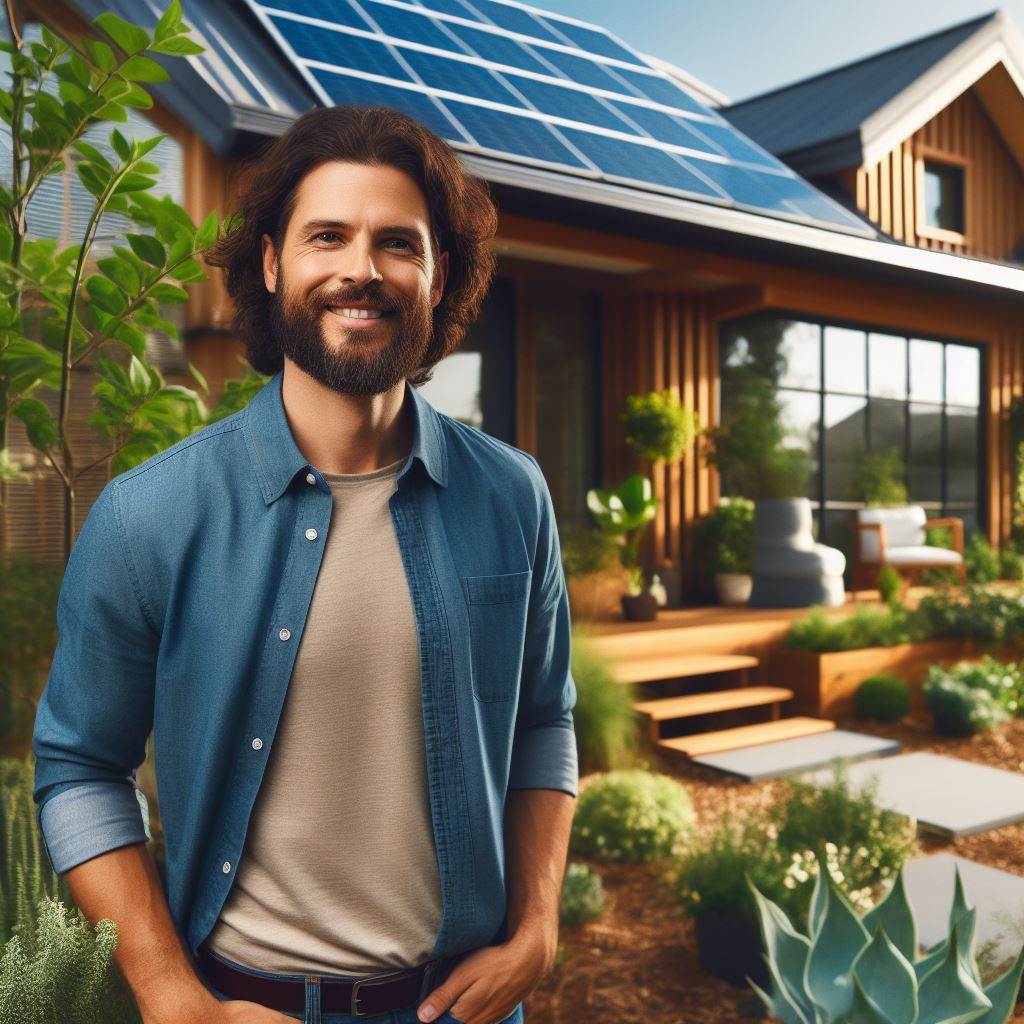Introduction
Aging in place allows seniors to stay in their homes independently. It’s crucial for their well-being and quality of life.
US construction trends play a pivotal role in creating environments conducive to aging in place.
With the aging population growing rapidly, there’s a pressing need for homes that cater to their evolving needs.
Builders are adapting designs to enhance accessibility and safety for seniors.
This shift in construction trends aligns with the desire of older adults to maintain their autonomy.
From wider doorways to lever-style door handles, these modifications promote ease of movement.
Incorporating features like step-free entries and grab bars ensures greater mobility and reduces the risk of falls.
Builders are increasingly integrating smart home technology to monitor health and enhance security.
This not only provides peace of mind but also allows for remote assistance if needed.
Sustainable and energy-efficient design elements are becoming standard, reducing utility costs for seniors on fixed incomes.
These advancements not only benefit seniors but also add value to homes in the long run.
The focus on aging in place reflects a shift towards more inclusive and compassionate housing practices.
By embracing these construction trends, we create spaces that support individuals throughout their lifespan.
As the demand for age-friendly housing grows, these innovations will continue to shape the future of construction.
In the following sections, we’ll delve deeper into specific trends and their impact on aging in place.
Let’s explore how design and construction are transforming to meet the needs of our aging population.
Understanding Aging in Place
Why aging in place is preferred over moving to assisted living facilities
- Emotional attachment: Many older adults have strong emotional ties to their homes, which enhances their sense of comfort and security.
- Familiarity and routines: Living in a familiar environment allows individuals to maintain their established routines, which can be crucial for overall well-being.
- Community connections: Aging in place promotes social connections with neighbors, friends, and family, reducing feelings of loneliness and isolation.
- Cost considerations: Assisted living facilities can be costly, and aging in place allows individuals to save on additional expenses.
- Autonomy and independence: Aging in place allows older adults to make choices and maintain control over their daily lives and decision-making processes.
Benefits of aging in place for older adults
- Preserving independence: By remaining in their own homes, older adults can maintain their independence, dignity, and sense of self-worth.
- Mental well-being: Familiar surroundings can contribute to improved emotional and mental well-being, reducing stress and promoting a positive outlook on life.
- Physical health: Aging in place encourages older adults to stay physically active, leading to better overall health and a reduced risk of certain medical conditions.
- Continuity of care: By staying in the community, older adults can maintain their established relationships with healthcare providers and receive personalized care.
- Home modifications: Aging in place often involves making necessary modifications to ensure safety and accessibility, resulting in a more comfortable living environment.
- Personalization: Older adults can personalize their living space to reflect their individual tastes and preferences.
Read: US Housing: From Urban to Suburban Shift
The Growing Demand for Aging in Place
Statistics on the aging population in the United States
As the United States population continues to age, the demand for aging in place is on the rise. Here are some statistics regarding the aging population:
- By 2030, all baby boomers will be over the age of 65, comprising approximately 20% of the total population.
- According to the U.S. Census Bureau, by 2060, the number of Americans aged 65 and older will reach 98.2 million.
- The average life expectancy in the United States currently stands at around 78.6 years.
Factors contributing to the increasing demand for aging in place
Several factors contribute to the increasing demand for aging in place:
- Preference for Familiar Environment: Many older adults prefer to stay in their own homes as they age, surrounded by familiar surroundings and memories.
- Emotional Well-being: Aging in place allows seniors to maintain important social connections with family, friends, and the community, leading to improved emotional well-being.
- Health Benefits: Studies have shown that older adults who age in place tend to experience better health outcomes compared to those in institutional settings.
- Independence and Control: Aging in place provides older adults with a sense of independence and control over their daily lives, fostering a sense of empowerment.
Economic Impact of catering to the aging Population
Catering to the aging population has significant economic implications:
- Construction Industry: The demand for home modifications and renovations to accommodate aging in place has created a booming market for the construction industry.
- Job Creation: The construction and healthcare industries experience substantial job growth due to the need for specialized services and products for seniors.
- Consumer Spending: Older adults who choose to age in place often invest in home modifications, assistive technologies, and healthcare services, boosting consumer spending.
- Tax Revenue: The increased economic activity related to aging in place generates tax revenue for local and state governments.
In fact, the growing demand for aging in place is fueled by the aging population in the United States.
People prefer to stay in their own homes due to the familiarity, emotional well-being, and health benefits associated with aging in place.
Moreover, the economic impact is significant, driving job creation, consumer spending, and tax revenue.
As the population continues to age, society must prioritize supporting individuals in their desire to age in place.
Read: Adaptive Reuse: Real Estate’s New Era
Key Construction Trends for Aging in Place
Exploring Universal Design
When designing or renovating homes for aging in place, it is crucial to understand and implement these key construction trends.
Universal design principles should guide the entire process, ensuring that the home is accessible, safe, and adaptable for all occupants regardless of their age or physical abilities.
Importance of Accessibility Features
Accessibility features are of paramount importance to ensure that older adults can consistently and independently perform daily activities.
From the entrance to the interior, attention should be given to ramps or zero-step entrances, wider hallways, and accessible switches and outlets.
Emphasis on Wider Doorways
One specific construction trend for aging in place is the incorporation of wider doorways.
With wider doorways, individuals using mobility aids, such as wheelchairs or walkers, can easily navigate through different rooms, making the home more accessible for them.
Lever-Style Handles
Lever-style handles are another noteworthy design feature that enhances accessibility.
Unlike traditional doorknobs, lever-style handles are easier to operate and require minimal strength, making them ideal for individuals with arthritis or limited hand dexterity.
Walk-in Showers
Walk-in showers are gaining popularity as they eliminate the need to step over high tub edges or slippery shower curbs.
These showers often feature barrier-free or low-threshold entries, providing easy and safe access to bathing facilities.
Non-Slip Flooring
Similarly, non-slip flooring materials significantly contribute to enhancing safety in residential buildings.
Textured tiles or slip-resistant vinyl can be used in areas that are prone to water exposure, such as bathrooms and kitchens, reducing the risk of falls caused by slippery surfaces.
Incorporation of Grab Bars
To further promote safety, grab bars should be strategically positioned in various parts of the house.
Installing grab bars near toilets, showers, and bathtubs ensures stability and support, especially when navigating wet or slippery areas.
By embracing these key construction trends, residential buildings can become more age-friendly and enable older adults to age in place with confidence and comfort.
The synergy between universal design, accessibility features, and specific construction trends ultimately creates spaces that cater to the changing needs of individuals as they age.
Read: Historic Preservation in Modern US Homes

Innovative Technologies for Aging in Place
Aging in place, a concept gaining traction in the United States, emphasizes the ability of individuals to remain in their own homes as they age.
Central to this concept is the integration of innovative technologies that facilitate independence, safety, and well-being for seniors.
Role of technology in facilitating aging in place
Technology serves as a cornerstone in enabling aging in place.
It empowers seniors to maintain their autonomy and quality of life by providing assistance with various aspects of daily living.
From simple tasks like turning on lights to more complex functions such as monitoring health metrics, technology offers solutions that promote aging in place with dignity and comfort.
Smart home features, such as voice-activated controls and automated reminders
Smart home features represent a significant advancement in supporting aging in place.
Voice-activated controls allow seniors to operate appliances, adjust settings, and request assistance with voice commands, eliminating the need for manual interaction.
Automated reminders enhance independence by prompting individuals to take medications, attend appointments, or perform essential tasks, thus promoting adherence to health routines and increasing safety within the home environment.
Wearable devices and health monitoring technologies for seniors
Wearable devices and health monitoring technologies are revolutionizing how seniors manage their well-being.
These devices, worn discreetly on the body, track vital signs, activity levels, and sleep patterns in real-time.
They provide valuable insights into health status, enabling early detection of potential issues and facilitating proactive interventions.
Moreover, wearable devices offer peace of mind to both seniors and their caregivers by providing continuous monitoring and immediate alerts in case of emergencies, such as falls or irregularities in vital signs.
In summary, the integration of innovative technologies plays a crucial role in enabling aging in place.
From smart home features to wearable devices, these advancements enhance independence, safety, and overall quality of life for seniors.
By embracing technology-driven solutions, we can create environments that support graceful aging and empower individuals to remain in their homes comfortably and securely as they grow older.
Read: 2024 US Market: Booming Condo Trends
Community Support and Aging in Place
Community support plays a crucial role in ensuring successful aging in place.
It encompasses various factors that contribute to the well-being and independence of older adults.
Significance of Community Support
- Community support provides older adults with a sense of belonging and social connection.
- It helps combat feelings of isolation and loneliness, which are common among seniors.
- By fostering social relationships, community support improves their overall mental and emotional well-being.
- Strong community bonds contribute to the creation of a supportive and inclusive environment for aging in place.
Importance of Accessible Transportation, Healthcare Facilities, and Social Services
- Accessible transportation enables older adults to maintain their independence by facilitating mobility.
- It allows them to access essential services, such as healthcare facilities and social activities.
- Easy access to healthcare facilities ensures timely medical attention and regular check-ups.
- Proximity to social services such as community centers and recreational activities promotes an active and engaged lifestyle.
Role of Community Organizations
- Community organizations play a vital role in promoting aging in place.
- They provide valuable resources and support services tailored to the needs of older adults.
- These organizations often organize social events, educational programs, and wellness activities for seniors.
- They collaborate with local authorities and healthcare providers to advocate for senior-friendly policies and services.
By actively engaging with community organizations:
- Seniors can participate in social and recreational activities: Through community organizations, seniors gain opportunities to engage in social and recreational activities, fostering a sense of belonging and community.
- Older adults receive assistance with essential tasks: Community organizations provide support with tasks such as transportation, home repairs, and meal delivery, enabling older adults to live independently.
- Community organizations offer information and guidance: They provide older adults with information about available healthcare facilities, social services, and programs designed for aging in place.
- These organizations promote volunteerism and intergenerational connections: By fostering intergenerational connections, community organizations offer opportunities for older adults to contribute their skills and wisdom to the community while staying socially active.
In general, community support is integral to the successful aging in place of older adults.
Accessible transportation, healthcare facilities, and social services enhance their quality of life and independence, while community organizations provide essential resources and advocate for senior-friendly policies.
By prioritizing community support, we can create an inclusive society that empowers older adults to age gracefully in their own homes.
Conclusion
Aging in place is an important concept that is gaining recognition in US construction trends.
It allows individuals to remain in their homes and communities as they age, promoting independence and overall well-being.
By prioritizing aging in place, construction trends are evolving to meet the needs and preferences of older adults.
This includes incorporating features such as single-level living, wider doorways and hallways, grab bars, and other accessibility modifications.
Adapting homes to accommodate aging individuals can greatly improve their quality of life and health outcomes.
It is crucial for readers to understand the significance of these construction trends and explore the options available to them or their loved ones.
By planning ahead and incorporating age-friendly features during construction or renovations, individuals can create a safe and comfortable environment that supports independent living in the long term.
Embracing aging in place not only benefits individuals but also contributes to the overall community by fostering social connections and reducing the burden on healthcare facilities and assisted living facilities.
Whether it’s adapting an existing home or building a new one, choosing construction options that prioritize aging in place is a wise decision.
It offers the opportunity to age gracefully, maintain a sense of familiarity and security, and reduce the need for disruptive moves.
As the US population continues to age, it is essential for individuals and families to consider these construction trends and take proactive steps to ensure a successful and fulfilling aging-in-place experience.




